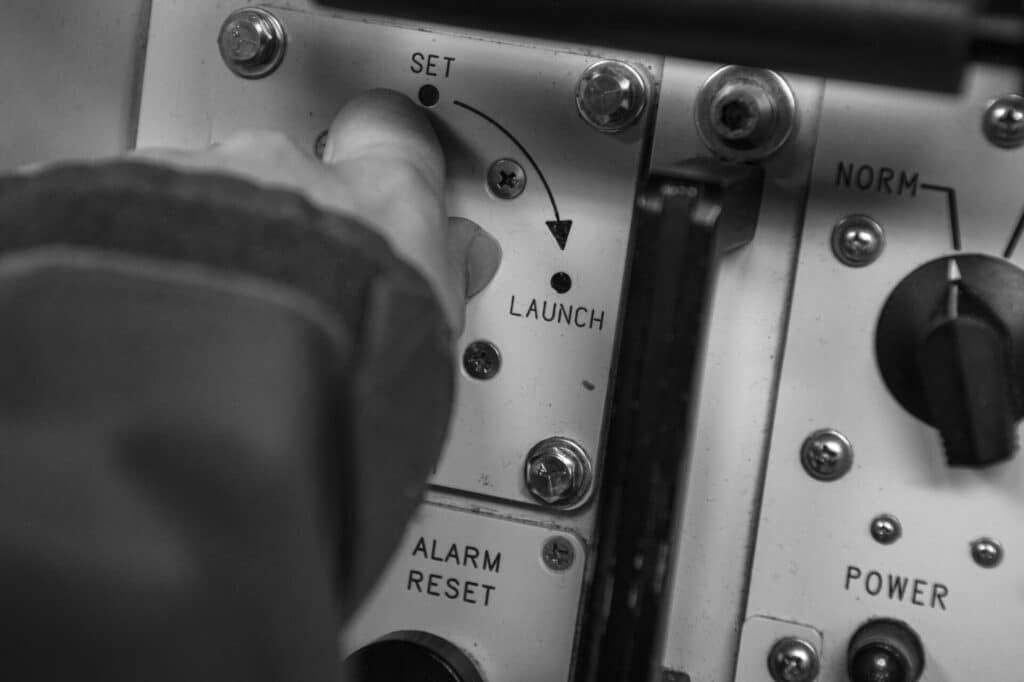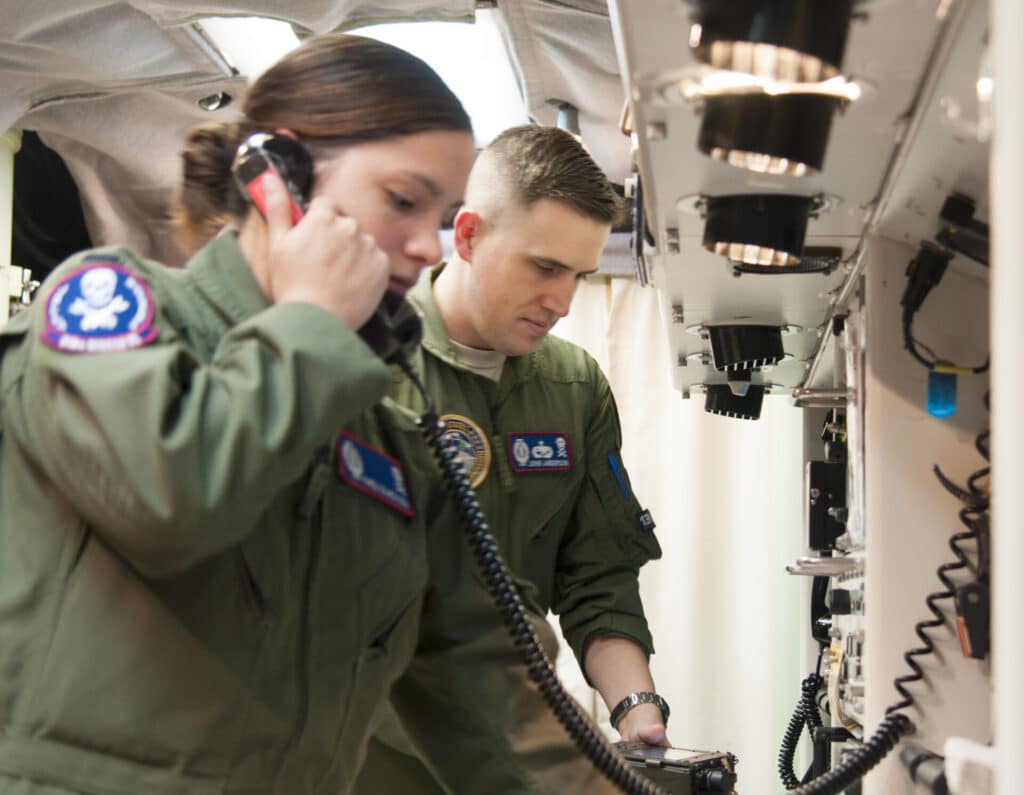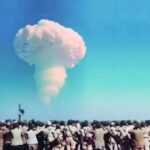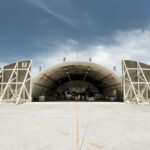Some countries plan to decentralize control of nuclear weapons in a crisis. Here’s why that’s dangerous.
By Giles David Arceneaux | March 14, 2023

With the Doomsday Clock now set at 90 seconds to midnight—the closest it has ever been to marking imminent global catastrophe—the collapsing global nuclear order presents a dire challenge. Among growing nuclear risks, Russia’s persistent nuclear threats throughout its war in Ukraine have increased the likelihood of nuclear use and thus threatened to undermine the long-standing tradition of the non-use of nuclear weapons. For its part, North Korea—which tested more missiles in 2022 than in any other year on record—promulgated a new nuclear doctrine that explicitly allows for the first use of nuclear weapons in a conflict.
But as scholars and policymakers grapple to confront these challenges, a reality complicates their policy responses: The current nuclear landscape presents different challenges for nuclear stability than during the Cold War—and policymakers and analysts alike are unprepared for it.
Even though it remains the most influential reference for US nuclear policymakers and scholars, the United States’ Cold War experience cannot explain—even less predict—behavior in the modern nuclear era. Analysts must now consider how new factors—such as resource limitations, domestic instability, and emerging technology—affect their old concepts and theories in nuclear politics.
Fundamental in this endeavor is to identify challenges to “strategic stability.” (Strategic stability refers to the ability of countries to interact during crises without escalating conventional military disputes to the use of nuclear weapons.) Although numerous factors affect strategic stability, one component of nuclear policy has clearly gained importance in the modern nuclear era—although not in policy discussions: the command and control of nuclear weapons.
Enduring challenges. Strategic stability was a core objective throughout the Cold War, and it remains so today. Nuclear command and control systems are how a country manages its nuclear forces during peacetime and prepares its arsenal for use during crises. These measures include the administrative oversight of nuclear use authority, technical controls such as permissive action links to protect against unauthorized use of nuclear weapons, and physical controls over the storage and maintenance of physical nuclear components.
A robust command and control system strengthens deterrence by guaranteeing that a country can execute a nuclear strike in response to any attack by an adversary. In contrast, a weak command and control system undermines deterrence by making an adversary think that attacking first might prevent nuclear retaliation.
Nuclear command and control systems are therefore at the center of strategic stability: When deterrence weakens, strategic stability falters.
Nuclear-armed countries may desire robust command and control systems, but in doing so they face a fundamental problem known as the “always/never dilemma” to describe the dual imperatives of command and control. While leaders need to signal that their nuclear forces are reliable and capable of retaliating against an enemy’s attack under any circumstance, they also prefer to retain centralized political control over the decision to use nuclear weapons. That is, “always” promotes arsenal reliability, whereas “never” promotes the safety and security of nuclear weapons.
Because these two imperatives are fundamentally in tension, resolving this dilemma has proved nearly impossible. For example, delegating the authority to use nuclear weapons to lower-level military commanders to increase arsenal readiness necessarily reduces centralized political oversight that protects against accidental and unauthorized nuclear use.
Ultimately, leaders have no choice but to make difficult tradeoffs between arsenal safety, security, and reliability when establishing nuclear command and control systems.
Outdated framework. Cold War analysts used the always/never dilemma to identify two ideal types of command and control: assertive control systems that favor “never” and centralize political control over nuclear weapons, and delegative control systems that favor “always” by enabling lower-level military commanders to use nuclear weapons with limited political oversight.
The assertive/delegative framework was useful for explaining the US Cold War experience, but it has notable limitations made evident when applying it to newer nuclear-armed countries. For instance, analysts disagree over whether North Korea employs assertive, delegative, or some sort of hybrid control, which in turn leads to divergent assumptions about the likelihood of crisis escalation and threats to strategic stability. Similar questions emerge for Russia and Pakistan’s nuclear command and control systems.
This conceptual ambiguity leaves policymakers with inadequate tools that have long passed their best-before date for engaging in current nuclear policy. Without a better understanding of how (new) nuclear-armed countries manage their nuclear forces, it is difficult to manage crises and reduce risks of unwanted nuclear escalation.
Other nuclear powers face different constraints than those faced by the United States, such as smaller nuclear arsenals, conventional military threats to territorial integrity and regime survival, financial constraints, and domestic political instability. The United States did not face such pressures when establishing its own command and control systems; yet, these constraints meaningfully shape how a country manages its nuclear forces.
Importantly, the Cold War literature overlooks a reality facing several nuclear weapons states: the presence of severe conventional military threats and domestic political instability. The simultaneous presence of severe external and internal threats makes the always/never dilemma exceedingly intractable. When facing conventional military threats, political leaders have strong incentives to decentralize control of nuclear forces and enable military operators to use nuclear weapons on their own authority to guarantee arsenal reliability (“always”). At the same time, fears of domestic political instability cause leaders to strengthen their grip on nuclear weapons and exclude military operators from the nuclear decision-making process (“never”).
Leaders facing this pair of pressures cannot afford to get it wrong. If they do, either state security or regime survival will likely be severely imperiled. The Cold War history, however, does not offer guidance on how leaders should respond to such a threat environment in overseeing the command and control of their nuclear arsenal. The modern nuclear era needs its own logic to understand the ways in which countries will respond to these challenges and what that means for strategic stability.
Timing matters. The Cold War framework comes up short in the modern nuclear era because it asks the wrong question when classifying command and control systems.
Leaders might prefer to centralize political control over nuclear weapons, but military operators remain required to deliver nuclear weapons. Even in countries with highly centralized political oversight of nuclear weapons, such as China and India, leaders must eventually delegate control to lower-level commanders to use nuclear weapons.
The right question for classifying command and control systems is therefore not whether states delegate nuclear use capability to lower levels of command, but rather when such delegation occurs.
The timing of delegation to lower levels of command is most important with respect to the onset of a crisis and can occur at one of three points: during peacetime, early in a crisis, or late in a crisis. Depending on the timing of delegation, the effects of nuclear command and control on strategic stability can vary widely.
Given the traditional focus on whether political leaders choose to assert or delegate control over nuclear weapons, the Cold War framework has little to say about the risks associated with delegating nuclear use capability at different times during a crisis. Yet it is in this space that the modern nuclear era diverges most significantly from Cold War history.

Early-crisis delegation. Conditional control delegates the ability to use nuclear weapons early in a crisis, once conventional warfighting has begun and as an adversary begins to generate larger military forces capable of significant offensive action. Under this framework, during peacetime, political leaders centralize control over their nuclear forces to bolster arsenal safety and security, whereas early in a crisis, they delegate control of nuclear forces to military operators who can prepare for nuclear use.
The concept of conditional control is essential for understanding behavior in the modern nuclear era. It is an attempt to precisely resolve a scenario that the Cold War framework cannot address—specifically, situations in which countries experience both significant conventional military threats and domestic political instability.
During peacetime, centralized command reduces the dangers of domestic political instability to nuclear forces. Political leaders retain strict administrative oversight of nuclear decisions, impose technical barriers to prevent unwanted actors from accessing or using nuclear weapons, and physically separate warheads from delivery systems to allow trustworthy political supporters to directly manage nuclear components. Rather than trust potential political competitors with access to nuclear forces, countries fearing domestic political instability—such as North Korea, China during the Cultural Revolution or apartheid-era South Africa—employ these measures to prevent unauthorized use and leverage the national prestige of nuclear weapons to reaffirm the regime’s domestic political authority.
In addition, by delegating nuclear use capability to lower-level commanders early in a crisis, leaders can prepare their arsenal for use to deter external military aggression. For countries facing military threats from conventionally superior adversaries with nearby forces—such as Pakistan—conditional control enables military operators to rapidly prepare nuclear forces to deter and possibly defeat a military attack.
Effect on strategic stability. Although conditional control sounds like a solution to the always/never dilemma, it creates new pathways to crisis escalation that fundamentally threaten strategic stability. This can occur in three ways.
First, by increasing arsenal readiness early in a crisis, a country might signal to its adversaries that it is preparing its nuclear weapons for offensive purposes. The rapid transition from centralized to decentralized control would likely worry adversaries about a nuclear first strike and encourage similar efforts to prepare for nuclear use.
Second, by suddenly transitioning nuclear decision-making capability from political leaders to military operators, political leaders lose oversight of nuclear operations at the time when it is most critical. If military operators obtain nuclear capabilities and begin preparing them for operational use, political leaders may be unable to halt such preparations while negotiating with other heads of state and attempting to de-escalate the crisis.
Third, these challenges occur during a crisis. This entails pervasive uncertainty and dramatically increases the likelihood of misperception, thereby increasing the likelihood of a crisis escalating to prevent the adversary from performing a first strike that would render nuclear retaliation impossible.
These new and significant risks to strategic stability brought by conditional control deserve greater attention from nuclear policy analysts.
Conditional control in practice. It is estimated that about one-third of nuclear-armed countries—including Russia, North Korea, and Pakistan—currently employ conditional control arrangements, suggesting analysts underappreciate the risks inherent to crises involving these countries.
In each case, peacetime arsenal management appears to promote centralized political control of nuclear operations. Administrative control emphasizes political oversight of nuclear decision-making and creates distinct chains of command that place military nuclear operators under civilian oversight. These countries also physically separate nuclear warheads from missile delivery systems to make unauthorized use impossible. In addition, at least in Russia and Pakistan, technical controls require operators to enter an alphanumeric code to unlock critical components of a nuclear weapon, thereby inhibiting unauthorized access.
Early in a crisis, however, these countries have doctrines in place that enable the rapid delegation of nuclear use capability to military operators. Political delegation to military operators weakens administrative oversight, removes technical barriers to nuclear components, and allows the military to physically prepare weapons for use.
Imagining these devolution procedures in a crisis scenario illuminates the inherent dangers of conditional control. For example, a crisis between the United States and North Korea—similar to the 2017 “fire and fury” episode—could create conditions for rapid crisis escalation. If North Korean leaders viewed hostile rhetoric and military exercises led by the United States as an impending threat, North Korea could begin the process of preparing its arsenal for use early in the crisis to prevent a decisive conventional or nuclear first strike against North Korea’s nuclear forces or political leadership by the United States. In turn, the United States would likely detect these operational changes and view the actions as imminently threatening and face severe pressures to effectively strike before North Korean nuclear forces would be capable of launching their own attack against US cities or military forces.
Such a scenario illustrates how fragile strategic stability is with the emergence of conditional control. Even if North Korea truly planned to only prepare its arsenal for defensive purposes, the act of doing so would dramatically increase the likelihood of crisis escalation and of nuclear use.
Despite they are destabilizing during crises, conditional command and control systems are becoming common among nuclear-armed countries, especially in countries that find themselves in crises with regularity.
Engaging the modern nuclear era. Given the range of ongoing tensions in global nuclear politics, analysts should expect continuing challenges to strategic stability and work to reevaluate their tools for reducing nuclear tensions.
Updated thinking on the challenges and constraints for policymakers in the modern nuclear era is essential for strengthening strategic stability. Underappreciated differences between contemporary nuclear-armed countries and the US Cold War experience lead to distinct dangers that require new thinking on how to engage nuclear threats without making them worse.
Editor’s note: The views expressed in this piece are those of the author and do not reflect the official policy or position of the US Air Force, the US Defense Department, or the US government.
Together, we make the world safer.
The Bulletin elevates expert voices above the noise. But as an independent nonprofit organization, our operations depend on the support of readers like you. Help us continue to deliver quality journalism that holds leaders accountable. Your support of our work at any level is important. In return, we promise our coverage will be understandable, influential, vigilant, solution-oriented, and fair-minded. Together we can make a difference.















